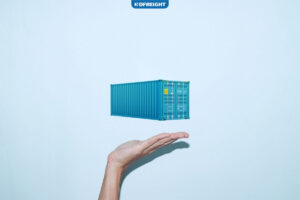When shipping goods over long distances by ocean, air, or land, cargo packaging becomes a big challenge for most shippers. It’s often difficult to find the right packaging type that guarantees product safety and security and provides an economical, space-saving solution to stack cargo in a container. Choosing the best cargo packaging type requires much research and experience. Without the assistance of a reputable shipping company, you might end up having your cargo damaged, rotten, or in an unacceptable condition. If you’re looking to ship your freight, read on to learn more about different types of cargo packaging, and contact us to get further help and advice.
Table of Contents
What Is Cargo Packaging?
Cargo packaging is the process of preparing goods or materials for transport. This involves using packaging materials and methods to protect the cargo from damage during transportation. Packaging also helps to prevent the loss or theft of cargo. There are many types of cargo packaging, depending on the type of goods transported. The role of packing and handling in cargo security is of the utmost importance to everyone involved in supply chain management. Let’s start with a brief history of cargo packaging over centuries.
A History of Cargo Packaging
Cargo packaging has a long history, dating back to the early days of trade and transportation. The first recorded instance of cargo packaging was in the 14th century when the Venetian merchant Marco Polo shipped a load of spices from Asia to Europe. The spices were packed in barrels, which protected them from the elements and prevented them from being damaged during the journey.
In the centuries that followed, various packaging methods were developed, depending on the type of goods being transported. For example, fragile items such as glassware were often packed in straw or sawdust, while heavier items such as metal ingots were often packed in barrels or sacks.
As transportation methods evolved, so did cargo packaging. The development of the railroad in the 19th century led to the development of new packaging methods, such as wooden crates and metal containers. The invention of the automobile and the airplane in the 20th century further revolutionized cargo packaging, as these new transportation methods required new packaging methods to be developed.
Today, cargo packaging is an essential part of the transportation industry. Various packaging methods are used, depending on the type of goods being transported. The goal of cargo packaging is still the same as it was centuries ago: to protect the goods from damage during transport and to ensure that they arrive at their destination in the same condition they were sent.
8 Common Types of Cargo Packaging
There are many different types of cargo packaging, each with its advantages and disadvantages. Here are the most common types of cargo packaging used for shipping various commodities over long distances.
Cardboard/Fiberboard
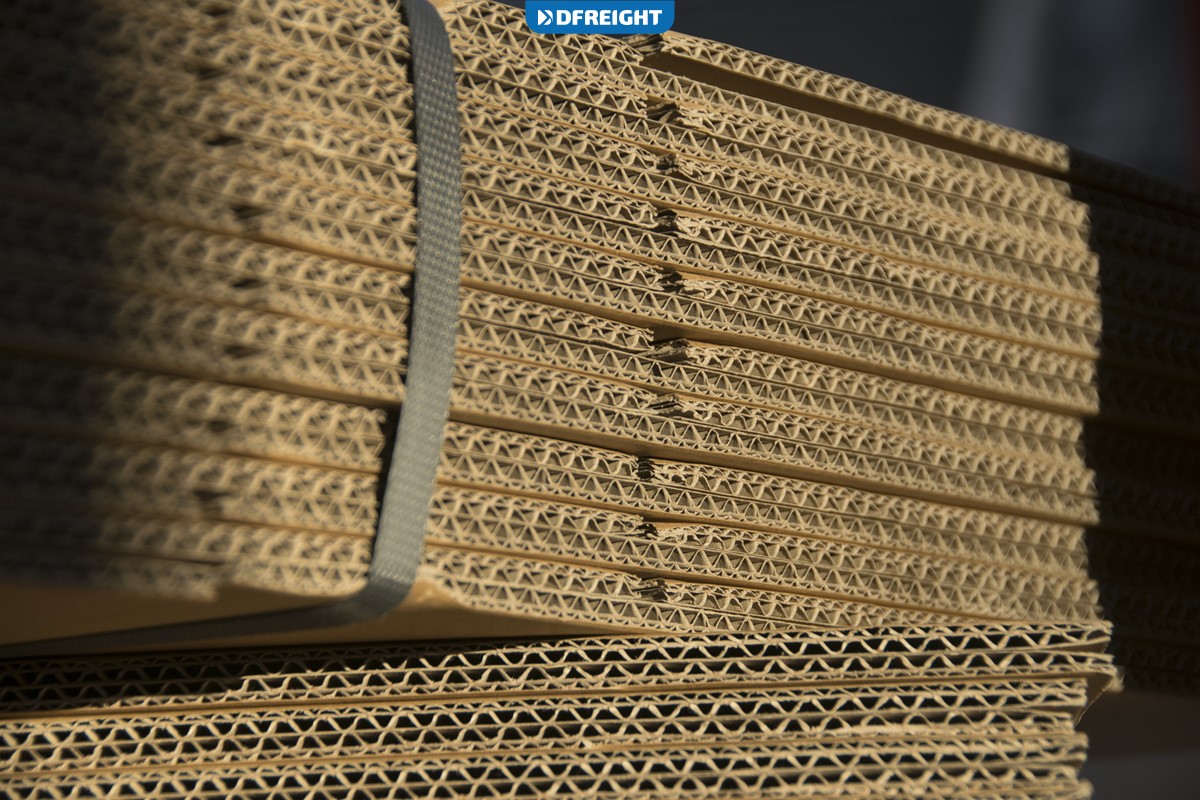
Cardboard boxes are a type of cargo packaging that is made from fiberboard. Fiberboard is a type of paper that is made from wood fibers. Cardboard boxes are usually made from two types of fiberboard, brown paperboard, and white paperboard. Brown paperboard is made from recycled paper and is usually used for packaging food and other items that are not sensitive to light. White paperboard is made from virgin paper and is generally used for packaging items sensitive to light.
Cardboard boxes are usually box-shaped and have a lid. The lid is generally made from the same type of fiberboard as the box. Cardboard boxes are typically used for packaging items such as food, cosmetics, and other small items.
There are three different types of cardboard packaging:
- Corrugated Carton: It is well-liked for its affordability, recyclability, strength, and lightness. Corrugated boxes are frequently used in the food sector as well as to package clothing, books, plastic, and other non-breakable commodities because of their high quality and safety.
- Double-Walled Corrugated Carton: It is frequently employed in crating. When moving furniture or other large goods, protect them by wrapping them in quality Styrofoam and bubble wrap, packing them tightly to prevent movement, palletizing them, and using strapping to hold them in place.
- Double Carton: This type of packing is more frequently used for fragile objects that need particular handlings, such as glass, porcelain, and smaller items. Each of these products needs to be manually wrapped in industrial bubble wrap. These things are then put into an inner shipment box, which goes into an actual shipping box at least 2 to 3 inches deep.
Bagged Cargo

Bagged cargo is a type of cargo that is packaged in a bag. This type of cargo is often used for smaller items that need to be protected from the elements or damage. Bagged cargo is usually placed in a container with other types of cargo, such as boxes or crates. Bagged cargo is often shipped by truck, train, or plane.
The product must be sturdy enough to endure external tension and pressure since the bags will only keep the contents in place and not offer any protection from harm from the outside world. Fertilizers, grains (rice, corn, wheat), seeds, dried fruit, sugar, coconut, coffee, fresh fruits and vegetables, flour, copra, little objects like shells, and raisins are examples of these products.
Wooden Cases

Wooden cases are one of the most popular types of cargo packaging due to their durability and versatility. They are typically made from high-quality wood, such as oak or mahogany, and can be either solid or plywood. Wooden cases can be used to transport a variety of items, including heavy machinery, electronics, and even art.
Wooden cases offer several advantages over other types of cargo packaging. They are very strong and can protect your items from damage during transport. They are also relatively lightweight, which makes them easy to move around. Additionally, wooden cases can be stacked on top of each other, which is helpful if you need to transport a large number of items.
Disadvantages of wooden cases include the fact that they can be expensive and they are not always easy to find. Additionally, if you are transporting fragile items, you must pack them carefully to avoid damage.
Wooden Crates

Wooden crates are a type of cargo packaging typically used for shipping heavy or oversized cargo. They are made of wood, often plywood or lumber, and are held together with nails, screws, or bolts. Wooden crates can be customized to fit the dimensions of the shipped item and are often used for products such as machinery, appliances, or furniture. Wooden crates offer protection from impact and vibration during shipping and can be stacked on top of each other.
They are appropriate for wooden packing that is incorporated into the skeleton. An open box may be employed when the contents are sufficiently elastic, only to need little packaging to aid in handling and stacking. They are occasionally used as an exterior package when consolidating cartons or enhancing their protection. Giant machines are frequently transported in the wooden skeleton box.
Steel Drums
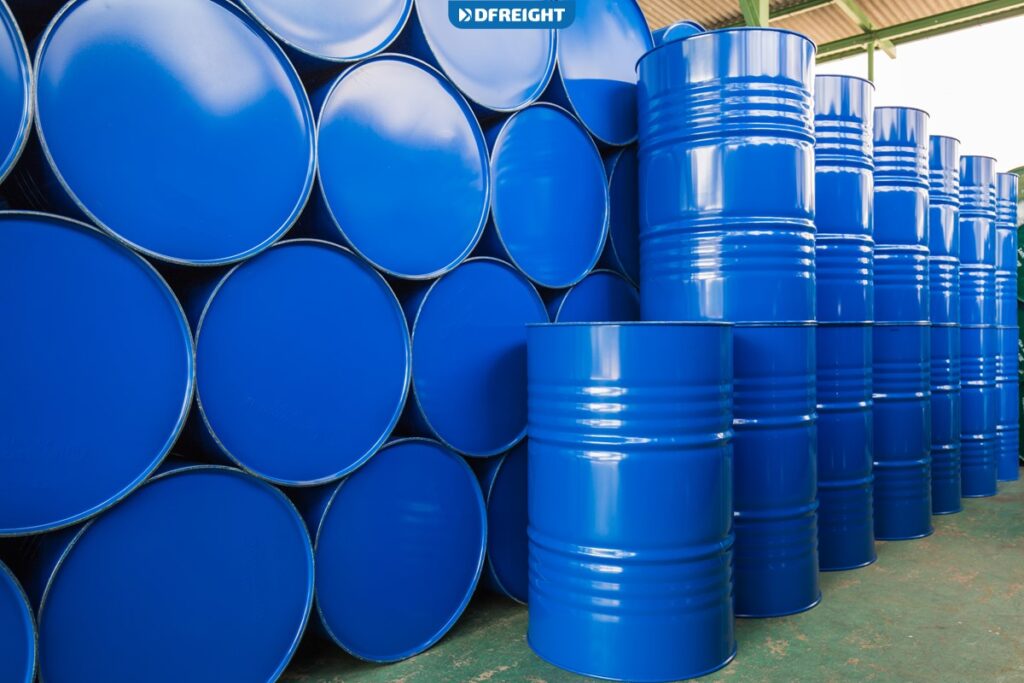
Steel drums are a type of cargo packaging that can be used to store and transport a variety of materials. They are made from steel formed into a cylinder shape and then welded shut. Steel drums can vary in size, but they are typically 55 gallons in capacity. They have a variety of uses, including storing and shipping oil, chemicals, and other liquids. Steel drums are also used to store and transport food, such as flour or sugar.
Steel drums offer many advantages for cargo packaging. They are solid and durable, so they can withstand the rigors of shipping and handling. They are also stackable so that they can be efficiently stored and transported. Steel drums are also easy to clean and maintain, so they can be reused multiple times, leading to more sustainability in the supply chain.
Bales

Bales are large, compressed blocks of material wrapped in plastic or water-resistant materials used to store and transport goods. Commonly used bales are made of hay, straw, paper, cardboard, cotton, and wool. Bales are an efficient and cost-effective way to package and transport large quantities of material and can be easily stacked and stored. Bales can be transported by truck, train, ship, or plane and are often used in agricultural, industrial, and recycling applications.
The unitization (grouping) of plastic films used in bale packaging allows for flexibility and adaptability, both in terms of size and packaging types. It has gained significant market popularity for its lightness and versatility in molding. The ability to modify the size of the bale in response to consumer demand enables the producer to satisfy the stock demands of the retailer that will be selling the finished good.
Palletizing Cargo
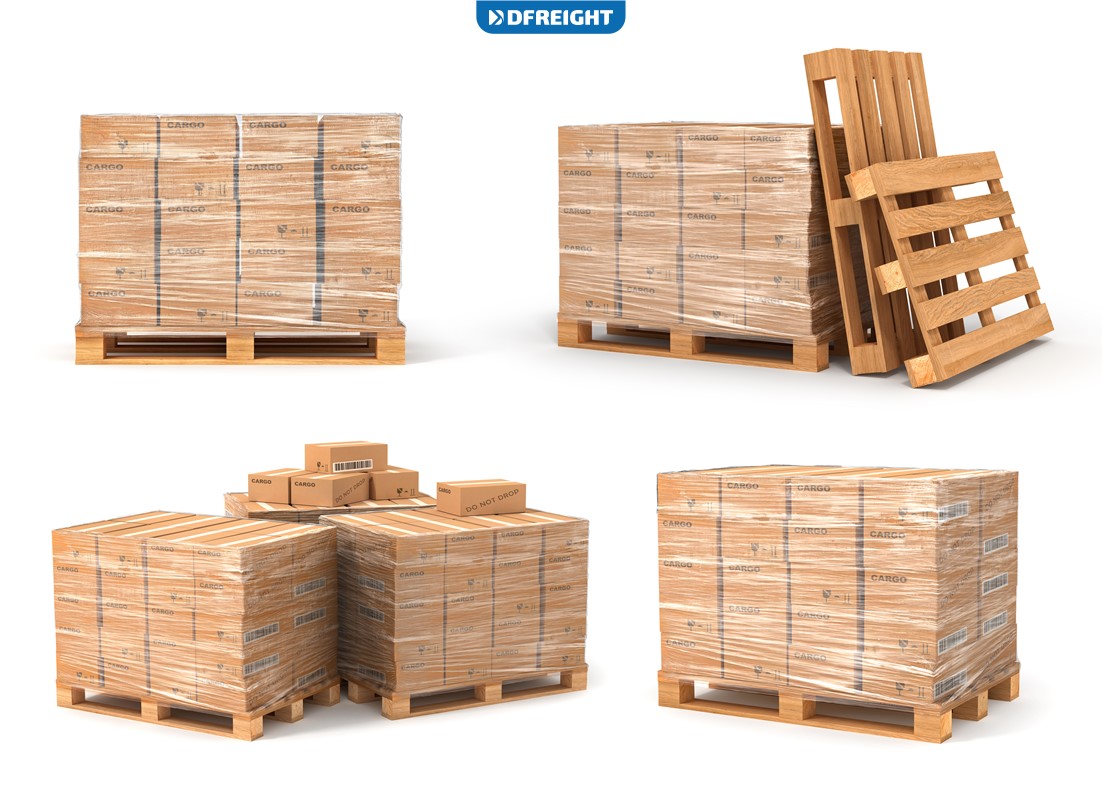
Palletizing is a type of cargo packaging in which goods are placed on a pallet and secured for transport. Palletizing cargo has many benefits, including improved safety, efficiency, and security. When done correctly, palletizing can help prevent damage to goods during transportation and make it easier to load and unload cargo. Additionally, palletizing can help optimize space in a shipping container or trailer, allowing more goods to be transported at once. Many goods or commodities can be palletized for a reasonable price to make handling, storing, and protecting them easier. Palletizing or unitizing can significantly lower the cost of packing.
There are six common pallets that fit the different intermodal containers now utilized in global trade. These six common pallets have the following standard sizes (in inches):
- 1016 x 1219 mm (40″ x 48″) North America
- 1000 x 1200 mm Europe, Asia
- 1165 x 1165 mm Australia
- 1067 x 1067 mm (42″ x 42″) Worldwide
- 1100 x 1100 mm (43″ x 43″) Asia
- 800 x 1200 mm Europe
Containers
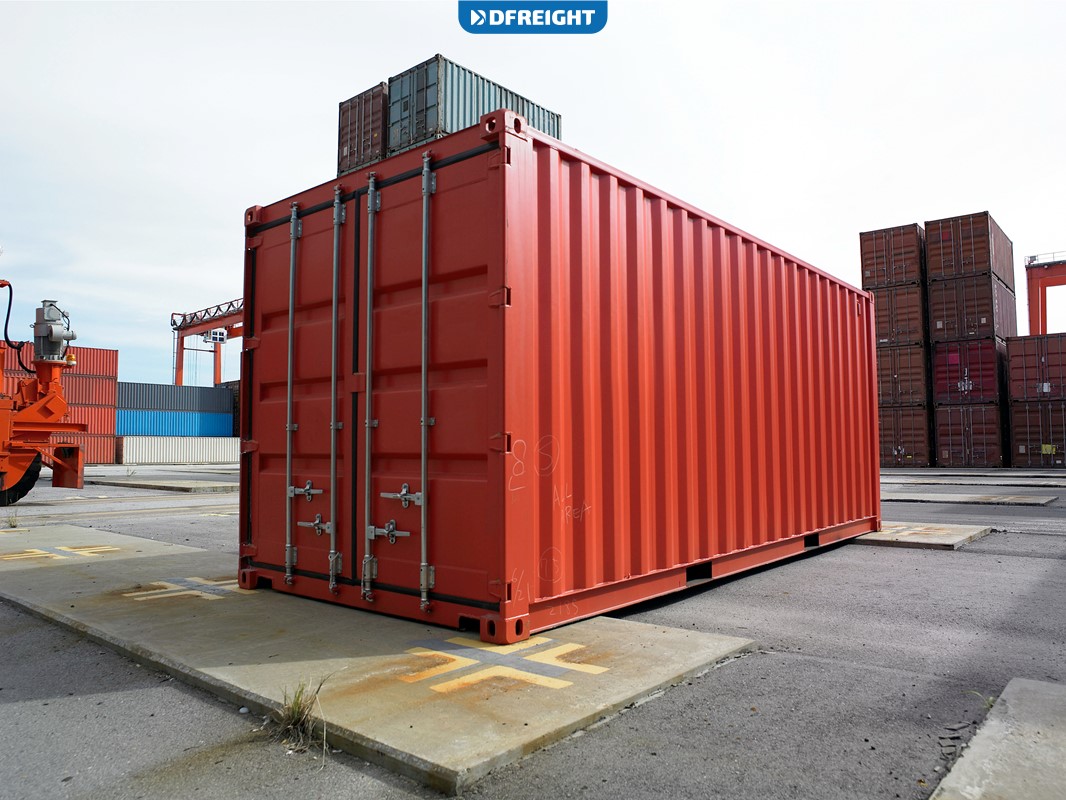
A container is a standard-sized rectangular box used to transport goods by ship, train, or plane. Containers are also known as intermodal containers because they can be used across different modes of transport, from ship to train to truck. The International Organization for Standardization (ISO) sets the standards for containers designed to be stackable and easy to load and unload.
There are two main types of containers: dry containers, which are used for non-perishable goods, and refrigerated containers, which are used to transport perishable goods. Dry containers are made of steel or aluminum and have either a corrugated or solid wall. They come in various sizes, but the most common are 20-foot and 40-foot containers. Refrigerated containers, also known as reefers, are made of stainless steel and have insulated walls. They come in a variety of sizes, but the most common are 20-foot and 40-foot containers.
Conclusion
Cargo packaging is essential in the logistics industry because it helps to protect the cargo from damage during transportation. It also helps to prevent the loss or theft of cargo. As we covered, there are many different types of cargo packaging, depending on the type of goods transported. Cardboard boxes, wooden cases, steel drums, and containers are all common types of cargo packaging. Palletizing is also a type of cargo packaging in which goods are placed on a pallet and secured for transport.
If you’re wondering about the best packaging type to ship your cargo worldwide, our professional experts at DFreight will be more than happy to give you a hand. We help you package your freight appropriately and have it smoothly shipped to all continents with the utmost security. Contact us today to get a free quote.
FAQs
What is cargo packaging?
Cargo packaging is the process of preparing goods or materials for transport. This involves using packaging materials and methods to protect the cargo from damage during transportation.
What are some common types of cargo packaging?
Common cargo packaging types include cardboard boxes, wooden cases, steel drums, and containers.
What is the purpose of cargo packaging?
The purpose of cargo packaging is to protect the goods from damage during transport and to ensure that they arrive at their destination in the same condition they were sent.
What are the benefits of palletizing cargo?
When done correctly, palletizing can help to prevent damage to goods during transport and make it easier to load and unload cargo. Additionally, palletizing can help optimize space in a shipping container or trailer, allowing more goods to be transported at once.
What are containers?
Containers are standard-sized rectangular boxes used to transport goods by ship, train, or plane. The International Organization for Standardization (ISO) sets the standards for containers, which are designed to be stackable and easy to load and unload.
What packaging can I use for perishable goods?
Refrigerated containers, also known as reefers, are made of stainless steel and have insulated walls. They come in various sizes, but the most common are 20-foot and 40-foot containers.
What are the different types of cardboard boxes?
There are three types of cardboard packaging: corrugated cartons, double-walled, and double cartons.



